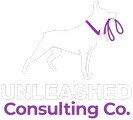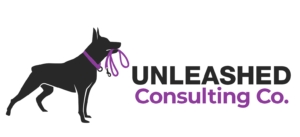As more companies turn to inbound marketing to generate leads, the need for an effective lead nurturing strategy becomes evident. Inbound marketing is great for attracting potential customers, but not all of these leads are ready to make a purchase immediately.
Studies show that only a small percentage of inbound leads are prepared to buy right away. This means that without a solid lead nurturing plan, you could be missing out on up to 90% of your potential sales, emphasizing how lead nurturing can help achieve your business goals.
Lead nurturing involves building relationships with potential customers by providing them with relevant information and keeping them engaged until they are ready to make a purchase. It’s about understanding their needs and guiding them through the sales funnel at their own pace. Without this approach, many of your leads might lose interest or turn to competitors.
In this blog, we will discuss what is lead nurturing and how to create a successful lead nurturing process.
Definition of Lead Nurturing
Lead nurturing is the process of building relationships with potential customers. This is a key part of inbound marketing, which uses content marketing, social media, and other online methods to attract customers’ attention. When someone discovers your business, they might not be ready to buy right away. That’s where lead nurturing comes in. It helps keep your business in their mind so that when they are ready to make a purchase, they think of you first.
Think of lead nurturing like any other relationship: the more effort you put in, the more you get out. Regularly engaging with your prospects by providing valuable information and addressing their needs keeps the relationship strong. Without this effort, your potential customers may lose interest or turn to a competitor.
An effective lead nurturing strategy involves understanding your prospects’ needs and providing them with relevant content and solutions, which can be efficiently managed using advanced marketing software. This could be through personalized emails, targeted social media posts, or informative blog articles. By staying connected and offering value, you build trust and keep your business top of mind.
What are the Benefits of a Lead Nurturing Strategies?
1. Increased Sales
By keeping your business top of mind, lead nurturing helps turn more prospects into paying customers, boosting your sales. For example, if you run a pet grooming service, regularly sending helpful grooming tips and special offers to potential customers can encourage them to book an appointment when their pet needs grooming.
2. Better Customer Relationships
Regular engagement builds trust and strengthens your relationship with potential customers, making them more likely to choose your business when they are ready to buy. For instance, a pet sitting service could send personalized updates and photos of pets to their owners while they are away, showing care and building a strong bond.
3. Improved Targeting
Lead nurturing allows you to understand your prospects’ needs and preferences better, enabling you to tailor your marketing efforts more effectively. A pet food delivery service might use surveys to learn about pets’ dietary needs and then send tailored recommendations and discounts on suitable products.
4. Higher Conversion Rates
By providing relevant and timely information, lead nurturing can help move prospects through the sales funnel more efficiently, leading to higher conversion rates. For example, a veterinary clinic could send educational content about pet health and reminders for vaccinations, encouraging pet owners to schedule regular check-ups, demonstrating effective ways to nurture new leads.
5. Cost-Effective Marketing
Focusing on nurturing existing leads can be more cost-effective than constantly trying to attract new ones, maximizing your marketing budget. A pet training service might maintain an email list of interested pet owners, offering exclusive tips and discounts, thus ensuring repeat business from an already engaged audience.
6. Enhanced Brand Awareness
Consistent communication through lead nurturing keeps your brand in front of prospects, increasing their awareness and familiarity with your business. For example, a pet supply store could regularly post on social media about new products, upcoming sales, and pet care advice, keeping followers informed and engaged.
7. Valuable Customer Insights
Lead nurturing provides valuable data on customer behavior and preferences, helping you refine your marketing strategies and improve your overall approach. A pet boarding facility could use feedback from customers to improve services and tailor marketing messages, ensuring they meet the needs of pet owners more effectively.
8. Long-Term Business Growth
Building strong relationships with leads can result in loyal customers who provide repeat business and referrals, contributing to sustainable long-term growth. For instance, a dog walking service might offer loyalty programs and referral discounts, encouraging satisfied customers to return and recommend the service to their friends.
How to Create an Effective Lead Nurturing Campaign
1. Use Targeted Content
Lead nurturing isn’t a one-size-fits-all approach. Research shows that using targeted content can greatly improve your results
First, understand your different buyer personas. Then, create specific content to nurture each persona based on their interests, goals, and triggers.
A marketing automation platform can help you identify, segment, and target your unique buyer personas as your strategy grows.
2. Use Multi-Channel Lead Nurturing Techniques
In the past, lead nurturing often meant setting up a simple email drip campaign to send generic emails to prospects.
Today, marketers are exploring new strategies and technologies that go beyond email. With advanced marketing automation platforms, smart marketers are now using multi-channel lead nurturing strategies.
These strategies usually combine marketing automation, email marketing, social media, paid retargeting, dynamic website content, and direct sales outreach. Because many tactics are involved, your sales and marketing teams must be well-aligned and work together smoothly to ensure that both nurtured and non-nurtured leads are effectively managed.
3. Focus on Multiple Touches
Every product and service has a different buyer’s journey, but research shows that prospects typically need ten marketing touches before converting into customers.
The best lead nurturing strategies provide content that helps prospects move through the buyer’s journey by addressing their common questions and concerns. Besides email, use a mix of content types such as social media posts, blog articles, whitepapers, interactive tools like calculators, and even direct mail to nurture your prospects into customers, incorporating various ways to nurture them.
4. Follow Up with Leads Quickly
Following up with leads quickly is crucial, yet many organizations still don’t act fast enough, missing critical opportunities in their welcome campaign efforts.
While automated lead nurturing can reach many prospects, a timely follow-up email or phone call is often the best way to convert inbound leads into qualified sales opportunities, especially when combined with a well-executed welcome campaign. The chances of turning a lead into a sales opportunity are much higher when you contact the lead immediately after they show interest on your website.
A timely, well-planned call to an inbound lead is far more effective than cold calling, highlighting the importance of level of personalization in your approach. You can see what the prospect has been researching based on their browsing behavior, and you have enough information to research their organization and role. This knowledge allows you to tailor your conversation to their specific needs and interests, making your follow-up more impactful and increasing your chances of converting the lead.
5. Send Personalized Emails
Email marketing is a highly effective lead nurturing tactic, and personalized emails tend to perform even better. A study by Accenture found that 41% of consumers switched businesses because they didn’t feel personalized attention.
There are many ways to personalize emails to enhance your lead nurturing strategy. For example, you can send triggered emails when a visitor downloads gated content, clicks on links in your emails, visits specific pages on your website, or shows high engagement levels, indicating a successful email open scenario.
Combining marketing personalization with behavior-triggered emails allows you to deliver the right messages to the right people at the right times, making your communication more effective and engaging.
6. Use Lead Scoring Tactics
Lead scoring is a method used to rank prospects based on their perceived value to your organization, helping to prioritize efforts in the sales pipeline.
You can implement lead scoring in most marketing automation platforms by assigning numeric values to specific actions, such as website browsing behaviors, conversion events, or social media interactions.
The resulting score helps you decide which leads should be followed up by a sales rep and which ones need more nurturing.
7. Align Your Sales and Marketing Strategies
When sales and marketing work together, lead nurturing becomes more successful, and customer retention improves.
To ensure both teams contribute effectively, identify the exact points in the buyer’s journey where prospects should be transitioned between sales and marketing. Consider different triggers like lead scoring, workflow enrollment, and conversion events.
Clearly outline the shared expectations, responsibilities, and goals for this collaboration in a sales and marketing service level agreement (SLA). This agreement will help both teams stay accountable for converting leads and nurturing them into paying customers.
How to Create a Lead Nurturing Strategy with Every Stage of the Sales Funnel
To nurture leads, provide timely and relevant value. Share information that helps them understand industry trends or solve their challenges. End each interaction with a call to action (CTA) that encourages the lead to move further down the sales funnel. Here’s a simplified approach, from product awareness to consideration, evaluation, and purchase:
Awareness
At this stage, the lead is cold and not yet in your funnel. Reach out to help them understand the problems you can solve without delving into product details, using targeted marketing software for better precision. Conclude each interaction with a CTA that pulls them deeper into the sales funnel and requests their contact information. For example, include a form in a blog post inviting readers to download a guide in exchange for their email address.
Tips
- Publish blog posts and articles on relevant topics.
- Run ads (PPC, billboards, direct mailers, display ads) leading to your content or website.
- Send emails and newsletters with announcements and content roundups.
Leads often need multiple touchpoints in the awareness stage — clicking ads, downloading ebooks, and initial sales rep conversations — before considering your product.
Interest
When a lead actively seeks more information about your solution, they enter the interest stage. Share your insights with downloadable guides and company events, and end with CTAs to learn more about your product in detail.
Tips
- Send long-form content like guides, reports, and workbooks.
- Host events such as company conferences and dinners.
- Lead discovery calls to understand the lead’s challenges and motivations.
Consideration
At this stage, the lead considers your company as a potential solution with the right strategy. Walk them through your product features, showing how you can address their pain points.
Tips
- Send detailed product content like datasheets, demos, and product tours.
- Give sales presentations that identify the lead’s challenges and show how your product solves them.
Evaluation
Here, the prospect shows serious interest in buying. Highlight how your product stands out from competitors and offer opportunities to experience it firsthand. Create urgency to switch to your product to convert into paying customers.
Tips
- Offer a free trial.
- Provide a free consultation.
- Arrange customer reference calls, allowing prospects to speak with current customers.
Why Unleashed Consulting Will Transform Your Lead Nurturing
Unleashed Consulting is an expert in lead nurturing, providing tailored strategies to help businesses thrive.
They create personalized content and marketing messages that resonate with your target audience, ensuring higher engagement and conversion rates. Using a multi-channel approach, they integrate email nurturing, social media, and paid retargeting to hit your lead scoring strategy and reach prospects wherever they are.
Unleashed Marketing uses advanced marketing automation platforms to streamline the lead nurturing process, with sophisticated lead scoring, behavior tracking, email campaigns, and automated follow-ups.
Timely follow-up emails, listening to the needs of clients, strategizing every stage of the buying, and calls significantly increase the chances of converting leads into sales opportunities.
Unleashed Consulting also ensures alignment between sales and marketing efforts, creating a seamless transition between teams to nurture leads effectively at every stage of the buyer’s journey.
They provide detailed analytics and reports, allowing you to see the impact of their strategies and understand your return on investment.
Partner with Unleashed Consulting to elevate your lead nurturing efforts and drive business growth.
Frequently Asked Questions
1. What Does It Mean to Nurture Leads Prospects at Every Stage of the Sales Funnel?
Nurturing leads means building relationships with potential customers at each stage of the sales funnel, showing that it’s the process which is essential for long-term success. This involves understanding their needs, providing valuable information, and guiding them from initial awareness to making a purchase decision. It’s about giving the right information at the right time to help them make informed decisions.
2. How Can Marketing Automation Improve Lead Nurturing?
Marketing automation streamlines the lead nurturing process by automating repetitive tasks like sending emails and tracking engagement. It helps you deliver personalized content to prospects based on their behavior and interests. This ensures timely communication and increases the chances of converting leads into customers.
3. What Are the Best Lead Nurturing Programs to Use for a Successful Lead Nurturing Technique?
The best lead nurturing programs include HubSpot, Marketo, Pardot, and ActiveCampaign. These platforms offer features like email marketing, CRM integration, analytics, and automation tools. They help you manage and optimize your lead nurturing strategies effectively, ensuring you reach your prospects at the right time with the right message.
4. What Are Some Effective Nurturing Journey and Lead Nurturing Tactics?
Effective lead nurturing tactics include personalized emails, lead generation. multi-channel best practices (such as social media and direct mail), and offering valuable content like guides and webinars for your product or service. Effective lead nurturing program involves timely follow-ups, improved sales cycle, using lead scoring and lead nurturing tool to prioritize high-value prospects, and aligning your marketing and sales teams are also important for successful lead management marketing campaigns.
5. What Are the Benefits of Lead Nurturing for My Pet Business?
Lead nurturing helps your pet business build trust and relationships with potential customers, leading to higher sales process and conversion rates. It improves the quality of leads based to your sales team and increases customer retention. By providing value at every stage of the buyer’s journey, lead nurturing can boost your marketing ROI and drive business growth.


